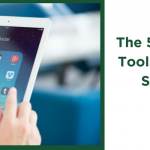On your mark . . . . Get set . . . . WAIT!
I have seen so many marketing campaigns that feel like a pee-wee track meet: they are hastily organized, poorly attended, and all hell breaks loose at the sound of the starting pistol.
Too much money, time, and effort are wasted marketing the wrong message to the wrong audience. In fact, you’ve probably done it yourself.
“That’s impossible!” You say. “We hired the best copywriters to create persuasive content! Our design team made stunning visuals! And the videos were so expensive, they had to be good! But we didn’t see any return on our investment!”
You are frustrated and exhausted. “This was the absolutely perfect campaign!” You ask, “where did we go wrong?”
Well, I hate to tell you, but at the very beginning, my friend. When you planned that campaign, did you think about your target consumers or clients?
I am all about planning every single detail prior to the launch of every marketing initiative, but some aspects still get lost in the process. There is one point I don’t feel is emphasized enough when creating the strategy for a marketing initiative: identifying the actual target for all of these marketing efforts.
Everyone is sharing the latest ways to “work” (note the scare quotes) the Facebook algorithm to your advantage or quickly boost your Instagram views, usually with just a few steps (kind of like those “one weird trick to losing weight” ads). Awesome, right? Wrong. All of the tips, tricks, and tactics in the world are useless unless you fully understand who your target audience or customers are.
Right now, you’re probably saying to yourself, “Well, that might be true for some business people, but I know who my customer is.”
Again, I hate to tell you this, but . . . you probably don’t.
I’m not trying to insult your knowledge of your own business, but when you are marketing on social media you need much more than the standard demographic outline. With any digital or online marketing, you need to dive deeper and understand more elements of your target audience.
Not to worry though, I have you covered. Here are some of the simple steps that we take our clients through when they are having trouble identifying their target audience. Let’s go!
1. Money, Money, Money, Money: Yep, everyone loves that green stuff. Turn your attention to your books. It is crucial for you to be able to identify a few key monetary aspects. Who–demographic-wise–is spending the most money? What product or service sells the most? What product/service delivers the highest margin? Once you know that, determine who is buying it. If you are a beauty brand that sells 1,000 hairbrushes for profit of $10 and sells 500 hair dryers for a profit of $400, then I would look into the demographic makeup of that hair dryer crowd–the brand should focus on the products that bring in more money with fewer sales. Use your sales successes and current client roster as your starting point.
2. Sex Matters: If you have a product or service that is specifically made for a woman, it does not mean that men could not be loyal consumers of your company. Don’t ignore any markets or demographics without the proper data to back up your decision! Major opportunities are lost this way.
3. Location x3: Where are your consumers? National, regional, state-wide, city-wide, or even more local? Why do I ask? Well, did you know that you can place advertising to specific audiences based on specific zip codes? Yes – you can be that specific.
So now you will have a very strong initial idea of some of the basic concrete aspects of your target audience. But you want to take this further. You’ll need to create two more items:
1. Baseline Audience Demographic Profile: This is where you take the information gathered from the initial three steps listed above and put it into an outline that can be used as a jumping-off point for further analysis and inspection. The profile would need the following information: age range, gender, location, average value of each new client/customer, net worth, household income, and any other pertinent data.
2. Buyer Profiles: Now this is where you can dive deeper and get more acquainted with your target audience. Buyer profiles allow you to create specific customer profiles that will reflect your audience in multiple ways. These take your existing data and delve deeper into various aspect such as interests, hobbies, media habits, and more. Buyer profiles will help you not only engage with your audience in a more human way, but also identify your audience faster.
While this might seem like a lot of work, the reward is well worth the effort. For one thing, digital marketing gives you more opportunities to target! For instance, did you know that on Facebook alone you can target based on restaurants that your audience visit, movies that they see, and political parties that they follow? And that is just scratching the surface.
So as you can see, it is more than having a product and/or service and simply choosing your audience. Proper audience identification is a process that may take a little time, but pays dividends when completed properly. Take your time and ensure that you have this piece completed before moving forward with any costly or time-consuming marketing activities or initiatives. Otherwise, you’ll be left in the dust.











